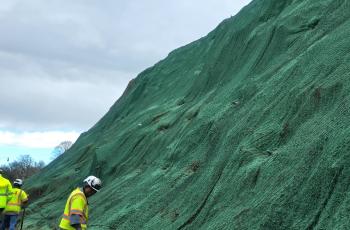The reaction between disinfection compounds used to clean drinking water, like chlorine, and naturally-occurring substances in source water can produce disinfection byproducts, some of which may lead to increased health risks if long-term exposure occurs. The EPA sets enforceable limits for two categories of disinfection byproducts in drinking water: trihalomethanes and haloacetic acids. The limit for total trihalomethanes (TTHMs) is 80 parts per billion (ppb) and the limit for five haloacetic acids (HAA5) is 60 ppb.
Health risks from disinfection byproducts are associated with long-term exposure at high doses. Therefore, test results are averaged annually for each sampling location. The graph below displays the annual averages reported to EPA. The highest annual average of the 12 sampling locations is shown in the graph. To date, drinking water meets all standards for disinfection byproduct concentrations, and DC Water has not reported any disinfection byproduct violations.



